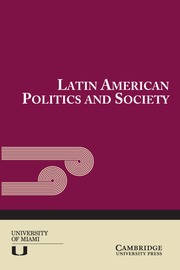No CrossRef data available.
Article contents
The Unbearable Uncertainty of Being on the Front Street-level Military in the Mexican War on Drugs
Published online by Cambridge University Press: 19 September 2024
Abstract
Since the so-called war on drugs began in Mexico in 2006, the military has been the leading actor in charge of the government’s public security policy, undertaking tasks that should be carried out by the police. Analyses of this security strategy are based on quantitative methods and have focused on its results: e.g., an increase in the homicide rate or the committing of human rights violations. In contrast, based on in-depth interviews, this article explores the testimony of military personnel to understand what they experience in the field. Contrary to what the existing literature argues, which maintains that the military acts with a logic of war, this article shows that the situation is far more complex: they act in a scenario characterized by improvisation, facing the dilemma between acting and being accused of human rights or not acting and being accused of disobedience.
- Type
- Research Article
- Information
- Copyright
- © The Author(s), 2024. Published by Cambridge University Press on behalf of University of Miami


